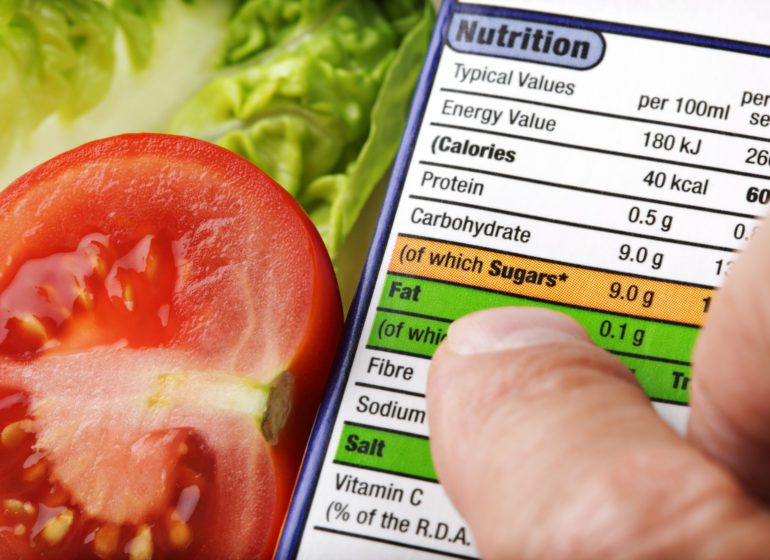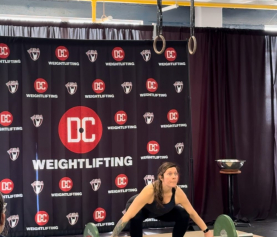The Importance of Reading Your Food Labels
Reading your food labels is critical to eating a healthy diet. What I find with my clients is that the majority of people only look at the front of a label and make a decision to buy or not based on the little information provided. In fact, most food labels are tempting you to buy the food with photos of the food and claims that sound like it may be a healthy choice.
When we glance at the front of a package, the words used to describe the food are not always telling us whether it is truly a healthy food or whether it will fit into our Lifestyle Diet Plan. For example, there is no definition for the word “natural” on a package so anyone can claim their product is all natural. Another example is a product that claims to be a lentil pasta or a cauliflower pizza when in fact the lentils and cauliflower found in the product are low on the list of ingredients meaning there is very little of that actual food in the product.
One thing the front (or any part of the box) might tell us is if the food is organic. An organic food is already going to be non-GMO but a non-GMO food is not necessarily organic. Check the label of all foods to make sure there are no GMO’s in the food. GMO’s are harmful to the gut microbiome and associated with health issues so we want to avoid them at all costs.
So we know we must turn the package over and look at both the ingredient list and the nutrition label. If we do both of these things we can made an educated decision as to whether the food is going to fit into our plan. So let’s take a look at what we want to look for in a healthy food.
1. Ingredient List: First, look at the ingredient list and ensure that the food contains only recognizable and healthy ingredients such as fruits, vegetables, whole grains and lean proteins. Avoid foods with long lists of unrecognizable ingredients, added sugars, dangerous artificial sweeteners (stevia and monk fruit are fine), and unhealthy fats.
Some harmful ingredients to look for on a food label ingredient list include:
-High fructose corn syrup
-Partially hydrogenated oils
-Artificial sweeteners like aspartame, saccharin and sucrolose
-Sugar alcohols such as xylitol, sorbitol, mannitol, maltitol, and erythritol
-Monosodium glutamate (MSG)
-Artificial colors and flavorings
-Sodium nitrate and nitrite
-Trans fats
-BHA and BHT
-Sulfites
Note that there are many words for high fructose corn syrup including glucose-fructose syrup, isoglucose, fructose-enriched corn syrup, crystalline fructose, maize syrup, HFCS (High Fructose Corn Syrup), corn sugar and glucose syrup. High fructose corn syrup as well as foods like agave that are high in fructose are associated with fatty liver disease making them worse than regular cane sugar.
If you look at a label and it has dangerous artificial sweeteners or trans fats or any of these things listed above just put it back and no need to look any further. If the product looks amazing and all the ingredients seem healthy then it’s time to look at the nutrition label.
2. Nutrition Label: What we want to see on a nutrition label depends on your goals. Let’s assume you want to lose weight. First, I want to see the number of calories per serving and the serving size. The calories might seem appropriate until you realize you can only have ¼ cup and then it might not be the best choice if you would rather have more substance for your calories. Next lets glance down to be sure it is not high in saturated fat (if you have high cholesterol we want to limit it to about 10 grams per day which we mostly get from animal products) and make sure it has zero trans-fat. If you are concerned about sodium you can also take a glance at that but the big items to look at are the total carbohydrates, fiber and protein. If the food is not meant to be part of your protein than its fine to be low or zero but if it is the main part of your protein at meal let’s make sure there is a substantial number between 10-20 grams. For carbohydrates I want to look at the net carbs of the item. So carbohydrates minus fiber gives me net carbs. This is the important number because many of you are limiting the net carbs to control insulin spikes for either weight loss or diabetes. The food might have 30 grams of carbohydrate per serving but if 15 of that is fiber then it’s a great low glycemic choice, and even more so if it has some fat and protein.
To try to simplify this a bit I am going to include a link to a little hand out I made on Tips to Using A Food Label and what to look for on the label. It doesn’t have all the detail I talked about in this blog but it’s a download you can keep with you until you are accustomed to reading labels.
In summary, reading food labels is so important and most people do not take the time to more than glance at the front. To truly let food be your medicine you need to take the time to understand what you are buying so you can make educated choices to promote optimal health and weight loss.
Start reading labels and taking responsibility for what goes into your own body and the family you might be feeding too. I’d love to hear from you so reach out with comments or questions here or on my social media.
Are you looking to transform your health? Mary works with clients all over the country developing personalized nutrition and exercise plans for weight loss and health. If you’re ready to get started on your journey to health and wellness contact her today!
Visit BodyDesigns Two Week Detox Plan or BodyDesignsbyMary for more information.












